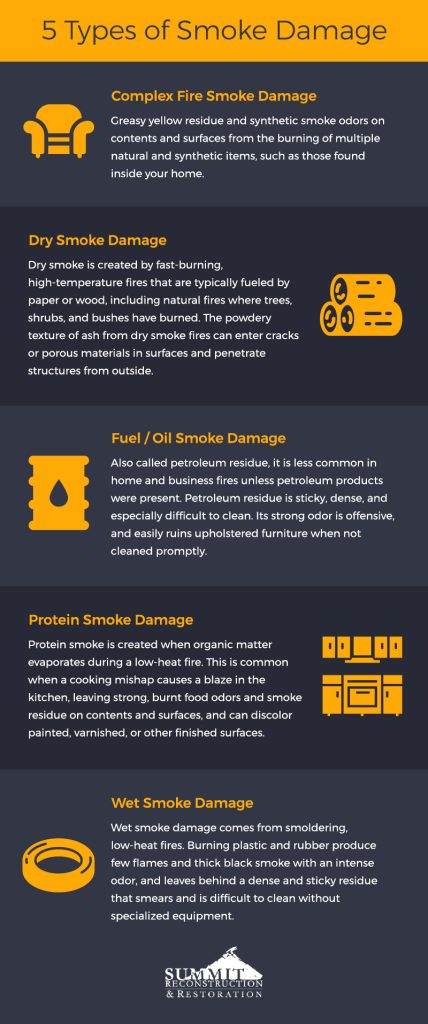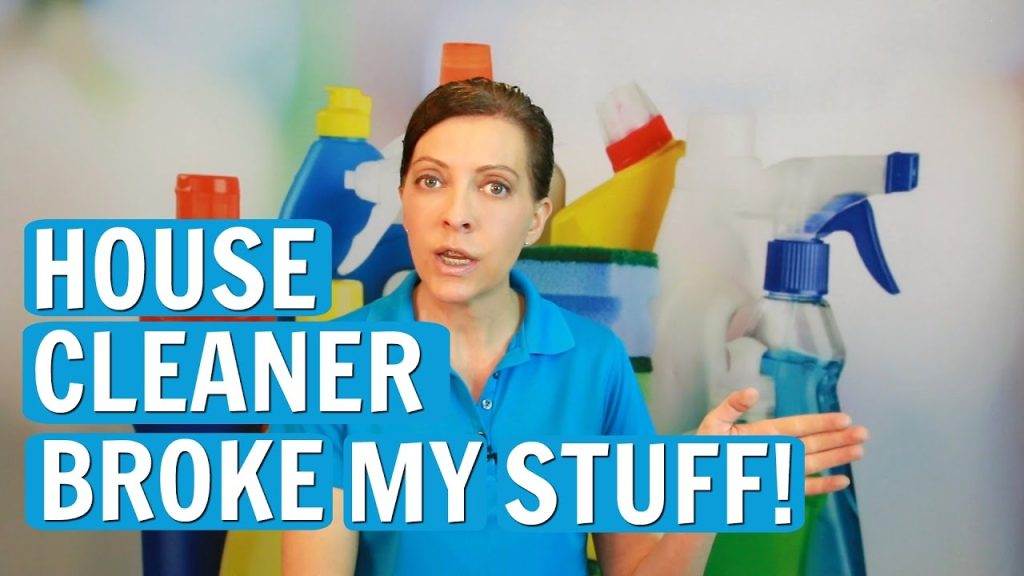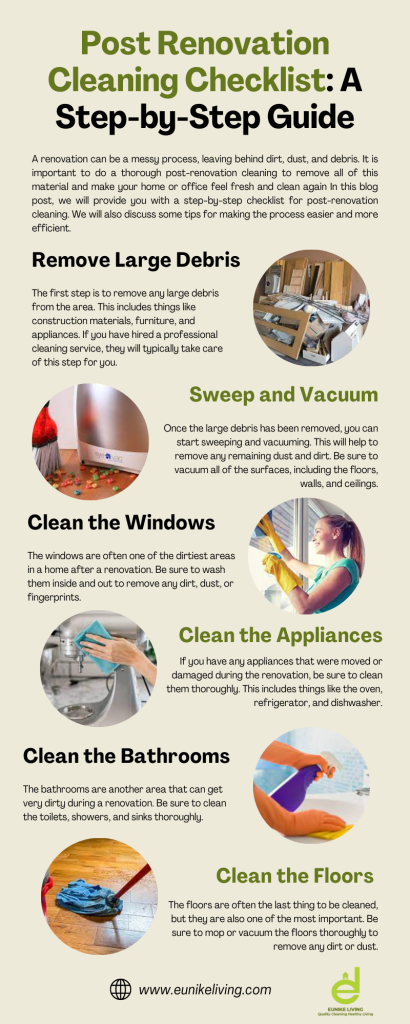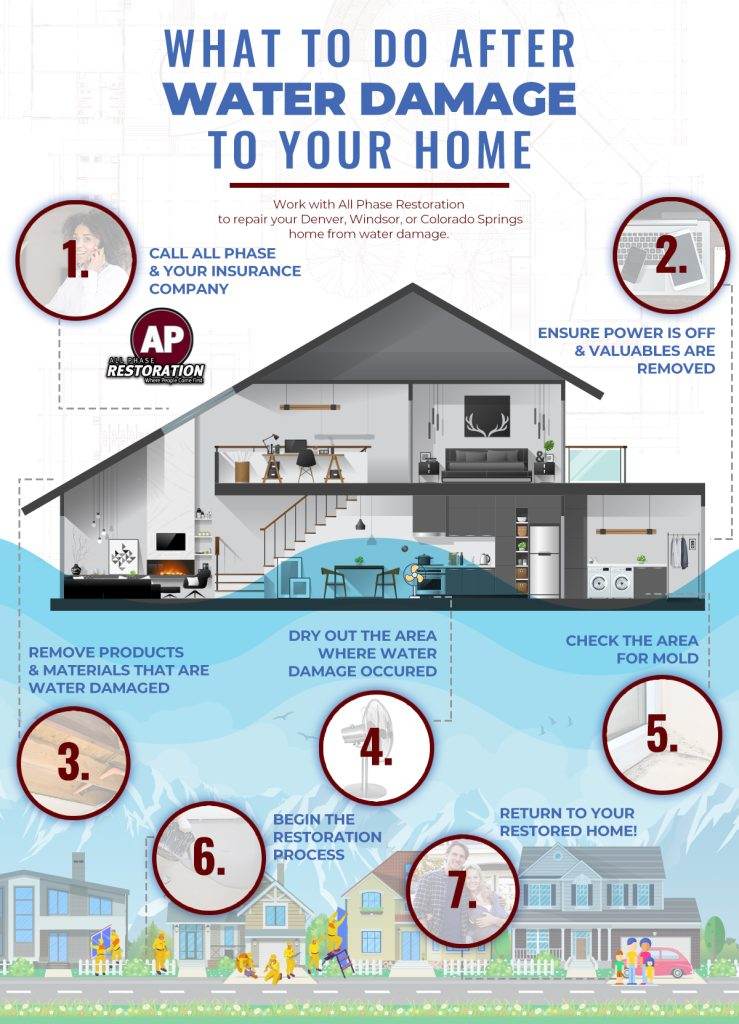3October 2023
Imagine this scenario: you’ve hired a professional cleaning service to freshen up your home, but as they diligently go about their tasks, a mishap occurs, and something valuable gets damaged. What typically happens in such a situation? Rest assured, in this article, we will explore the usual course of action taken by cleaning services when an unfortunate accident occurs during the cleaning process. From communication to compensation, we’ll cover all the necessary steps to ensure your peace of mind.

This image is property of summitreconstruction.com.
Liability for Damage
Responsibility of the Cleaner
As a professional cleaner, it is your responsibility to ensure that no damage occurs during the cleaning process. You should take all necessary precautions and exercise diligence to prevent any mishaps. This includes using appropriate cleaning techniques, handling equipment carefully, and being cautious around fragile or valuable items.
Insurance Coverage
Having insurance coverage is crucial for cleaning businesses. It provides financial protection in case of any accidental damage that may occur during the cleaning process. As a cleaner, it is essential to have liability insurance that covers property damage and third-party injuries. This insurance coverage ensures that you are not personally liable for the costs of repairing or replacing damaged items.
Documentation of Damage
Documenting any damage that occurs during the cleaning process is vital for determining liability and resolving disputes. Make sure to take photographs of the damaged items and note down the details of the damage, including a description, date, and time it occurred. This documentation will serve as evidence if there is a need to file an insurance claim or resolve a dispute with the client.
Notifying the Client
Immediate Notification
If you accidentally damage an item while cleaning, it is crucial to notify the client immediately. Prompt communication is essential to maintain transparency and keep the client informed about the situation. By notifying the client immediately, you demonstrate your honesty and willingness to take responsibility for the damage.
Description of Damage
When informing the client about the damage, provide a clear and accurate description of what happened. Be honest and sincere in your communication, explaining how the damage occurred and expressing your regret for the incident. This will help the client understand the situation and prepare them for the next steps in resolving the issue.
Assessment of Damage
Inspecting the Damage
After notifying the client about the damage, it is important to inspect it thoroughly. Carefully examine the item to assess the extent of the damage and determine the appropriate course of action. Take note of any additional factors that might affect the repair or replacement process, such as the availability of spare parts or the need for specialized services.
Determining Extent of Damage
To accurately determine the extent of the damage, consider consulting with a professional if necessary. They can provide insights into the repairability of the item and help estimate the potential costs involved. By having a clear understanding of the extent of the damage, you can communicate this information to the client effectively and discuss possible solutions.
Estimating Cost of Repair
Once you have assessed the extent of the damage, it is important to estimate the cost of repairing or replacing the damaged item. Take into account factors such as the cost of materials, labor, and any additional expenses involved in the repair process. Providing the client with a detailed and transparent estimate will help them understand the financial implications and make informed decisions.
Reparation Process
Repairing the Damaged Item
If the damaged item is repairable, discuss with the client whether they would prefer it to be repaired. Provide them with options for reputable repair services and seek their approval before proceeding. Ensure that the item is repaired by a professional or skilled technician who can restore it to its pre-damaged condition. Keep the client updated on the progress of the repair and address any concerns they might have.
Replacing the Damaged Item
Sometimes, the damage may be irreversible or the cost of repair may exceed the item’s value. In such cases, replacing the damaged item could be a more suitable solution. Work with the client to identify a suitable replacement and ensure that it meets their requirements and preferences. Take responsibility for coordinating the purchase and delivery of the replacement item, ensuring a smooth transition.
Refunding or Compensating the Client
In instances where repair or replacement is not possible, or the client prefers an alternative resolution, refunding or compensating the client could be an appropriate course of action. Discuss with the client the amount of refund or compensation they deem fair and reach a mutual agreement. Ensure timely processing of the refund or compensation, demonstrating your commitment to resolving the issue satisfactorily.

This image is property of i.ytimg.com.
Resolution of Disputes
Negotiation and Settlement
In the event of a dispute arising from the damage, always attempt to resolve the matter through negotiation and settlement. Engage in open and respectful communication with the client, listening to their concerns and addressing them adequately. Seek a mutually agreeable solution that takes into account all relevant factors, such as the extent of the damage, repair options, and financial implications.
Involvement of Mediators or Arbitrators
If a satisfactory resolution cannot be reached through direct negotiation, it may be necessary to involve mediators or arbitrators. These impartial third parties can facilitate discussions and help find a compromise that both parties can accept. Mediation or arbitration can provide a structured and objective approach to resolving disputes, offering a fair and balanced outcome.
Legal Actions
In rare cases where all other attempts at resolution fail, legal actions may be necessary to resolve the dispute. However, it is important to note that legal proceedings can be costly, time-consuming, and can strain the relationship between the cleaner and the client. It is advisable to consider legal actions as a last resort and explore alternative dispute resolution methods before proceeding with litigation.
Prevention of Damage
Proper Training of Cleaners
To minimize the risk of damage during the cleaning process, it is essential to provide your cleaners with proper training. Ensure that they are knowledgeable about appropriate cleaning techniques, handling equipment safely, and identifying fragile or valuable items. Regularly update their skills to keep up with industry best practices and technological advancements.
Use of Suitable Cleaning Equipment
Using suitable and well-maintained cleaning equipment is crucial for preventing damage. Make sure that your cleaners have access to the appropriate tools and materials needed for different cleaning tasks. Properly maintained equipment reduces the risk of malfunctions or accidents that could lead to damage.
Following Manufacturer’s Guidelines
Adhering to the manufacturer’s guidelines for cleaning and maintenance is essential for avoiding damage to items. Familiarize yourself and your cleaners with the specific instructions provided by manufacturers for different products and surfaces. Following these guidelines ensures that cleaning is done safely and does not cause any harm or damage to the client’s belongings.

This image is property of miro.medium.com.
Liability Waivers
Including Waivers in Cleaning Contracts
To protect your cleaning business from liability, consider including liability waivers in your cleaning contracts. These waivers can help clarify the limits of your responsibility and communicate the client’s understanding of the potential risks involved. Consult with a legal professional to ensure that the liability waivers you include in your contracts are enforceable and provide adequate protection for your business.
Enforceability of Waivers
It is important to note that the enforceability of liability waivers may vary depending on jurisdiction and specific circumstances. The validity and enforceability of waivers can be influenced by factors such as local laws, the wording of the waiver, and the nature of the damage or negligence involved. Consulting with a legal professional will help ensure that the waivers you use are enforceable and provide the intended protection.
Client’s Responsibility
Preparation and Organization Prior to Cleaning
Clients also play a role in preventing damage during the cleaning process. It is their responsibility to adequately prepare and organize their belongings before the cleaner arrives. This includes moving fragile or valuable items to a safe location, securing loose or delicate objects, and providing necessary instructions regarding special care requirements.
Notifying Cleaner of Fragile or Valuable Items
Clients should communicate with the cleaner about any fragile or valuable items that require extra caution. By providing this information upfront, clients help cleaners avoid potential accidents and damage. Clear and open communication between the client and the cleaner is key to ensuring a successful and damage-free cleaning experience.
Supervising the Cleaning Process
Clients have the option to supervise the cleaning process if they prefer to ensure that their belongings are handled carefully. By being present during the cleaning, clients can offer immediate guidance or address any concerns that arise. However, it is important for clients to trust the cleaner’s expertise and give them the necessary space to perform their duties efficiently.

This image is property of www.stateindustrial.com.
The Role of Insurance
Verification of Cleaner’s Insurance Coverage
As a client, it is essential to verify the cleaner’s insurance coverage before engaging their services. Request proof of insurance and ensure that it includes sufficient coverage for property damage. This verification will give you peace of mind, knowing that you are protected in the event of any accidental damage.
Submitting Insurance Claims
In the unfortunate event that damage occurs, you may need to submit an insurance claim to seek compensation or reimbursement. Follow the proper procedures outlined by the cleaner or their insurance provider to ensure your claim is processed smoothly. Provide all necessary documentation, including photographs and a detailed description of the damage, to support your claim.
Claims Investigation
Once you have submitted an insurance claim, the insurer will conduct an investigation to assess the validity and extent of the damage. Be cooperative during this process, providing any additional information or documentation requested by the insurer. The claims investigation aims to ensure a fair and accurate assessment of the damage and facilitate a timely resolution.
Maintaining a Good Relationship
Communication and Cooperation
Maintaining communication and cooperation throughout the resolution process is essential for preserving a good relationship between the client and the cleaner. Keep the client informed of any progress, updates, or changes regarding the damage and its resolution. Respond promptly to their inquiries or concerns, demonstrating your commitment to finding a mutually satisfactory solution.
Finding a Mutual Resolution
When resolving a damage-related issue, aim for a mutual resolution that satisfies both parties. Consider the client’s perspective and concerns, and be willing to negotiate within reasonable bounds. By working together to find a resolution, you can strengthen the client’s trust and confidence in your services.
Post-Damage Follow-up
After the resolution of a damage incident, follow up with the client to ensure their satisfaction and address any remaining concerns. This post-damage follow-up shows your dedication to customer service and provides an opportunity to reinforce the client’s trust in your cleaning business. Additionally, it allows you to learn from the incident and implement any necessary improvements to prevent future occurrences.

This image is property of www.aprestoration.com.
